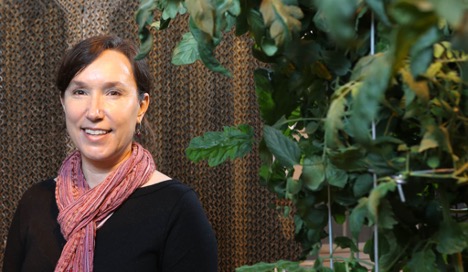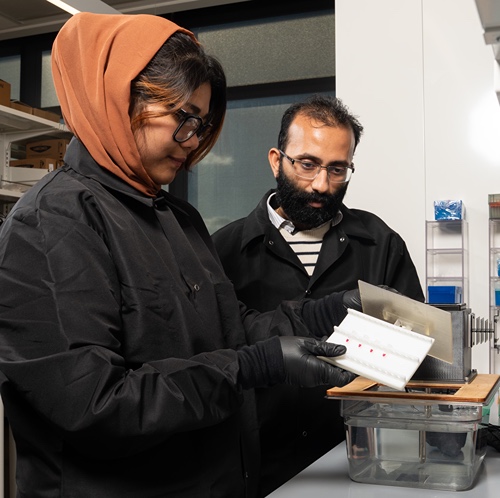Horticulture professor one of eight faculty Fulbright Scholars
“A lot of people don’t know this, but tomatoes originated in the Andes Mountains,” Lori Hoagland, associate professor of Horticulture said. “For that reason, understanding soil biodiversity there has major implications for developing new disease-resistant tomato varieties.”
This research is the basis for the Fulbright Scholar Award Hoagland recently received to study soil biodiversity and its impact on the composition and activity of tomato microbiomes.
She will spend six months in the Andes Mountains in Colombia collecting and analyzing soil samples, and determining how they affect disease resistance in wild tomato ancestors.

Hoagland was one of eight Purdue faculty members to receive a Fulbright Scholar Award this year, the largest number of Purdue faculty awardees in a single year. Purdue Fulbright awardees will conduct research across four different continents-Africa, Asia, Europe, and South America. While Hoagland’s project will focus largely on better understanding soil biodiversity in Colombia, her research also has implications for specialty crop farmers here in Indiana.
Like many researchers, Hoagland and her team have looked to the wild ancestors of modern crops to find traits that can help crops withstand challenges such as diseases. This is possible because plant breeders have traveled the globe collecting wild plants and conserving them in germplasm banks. In contrast, the role of soil biodiversity in the regions where modern crops originated has been less appreciated. Plants interact with an abundant and diverse assortment of soil microbes that can help them withstand stressful situations. Learning more about the microbes in soil that evolved alongside wild crop ancestors will help scientists learn how to manage plant microbiomes to improve crop performance.
A recent peace treaty ended 50 years of civil war in Colombia, a conflict that significantly hampered economic and agricultural development throughout the country. With its rich and diverse soil and range of climates and ecosystems, Colombia has lots of potential to scale up its agricultural production and improve its economic future, Hoagland said. However, if this is not conducted carefully and with an eye on preserving Colombia’s unique biodiversity, then its valuable natural resources could be lost.
“Part of my research will examine how agricultural production can expand without harming Colombia’s natural ecosystems, which are among the most biodiverse in the world,” Hoagland continued.
While her research is primarily scientific in nature research and results never exist in a vacuum, Hoagland hopes to better understand how cultural factors impact stakeholders in Colombia’s agricultural sectors. She also hopes to deepen ties to Colombian scholars and students to better facilitate cultural and academic exchanges between Purdue and Colombian universities.
“My Colombian colleagues have expressed interest in learning how to integrate outreach activities into their research and teaching,” Hoagland added. So similar to the way Hoagland manages her program here, she and her Colombian colleagues will visit farms to learn about their needs, and conduct workshops aimed at helping growers learn how to improve the health of their soils.
In addition to benefiting Colombian communities, Hoagland believes her research will have implications in Indiana as well.
People often think of Indiana as only growing corn and soybeans, but we also have a significant tomato industry. We are second in the nation in processing tomato, and fresh-market tomatoes are a keystone crop in the rapidly expanding local food market,” she explained. “One of the long-term goals of my research program is to help Indiana’s tomato growers better manage diseases while reducing dependence on pesticides.” To accomplish this goal, she has been investigating ways to increase populations of beneficial microbes in soil that can suppress disease-causing microbes, and develop new tomato varieties that can interact with these microbes to fight disease. This research will help make this goal possible.
Hoagland begins her research in Colombia in December. She will travel between remote spots in the Andes Mountains and the National University of Colombia (UNAL) in Bogota, where she will collaborate with faculty and graduate students.
“This experience will also help me learn how to better adapt my teaching style for students of different cultural and academic backgrounds,” she said.






